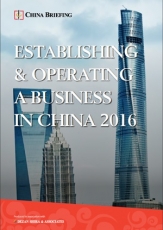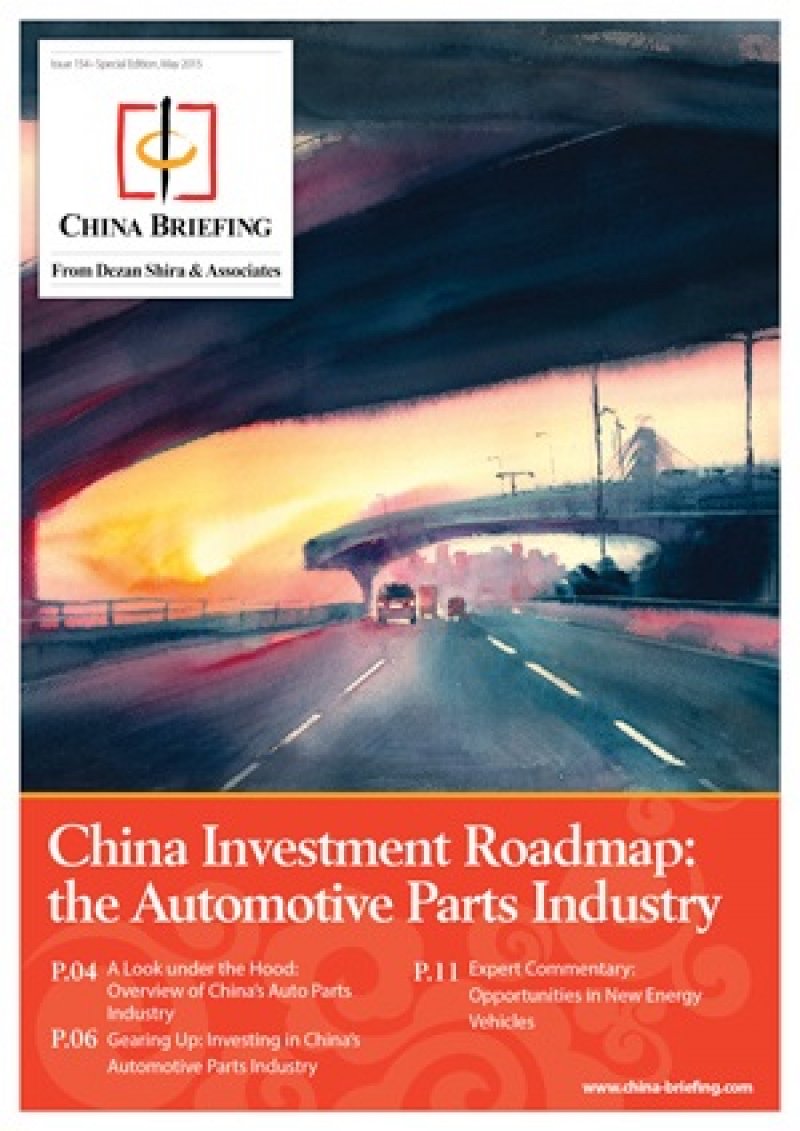The Benefits of Cluster Manufacturing – China’s Advantage
By Ari Chernoff
As wages continue to rise in an increasingly service oriented economy, China looks to manufacturing clusters to bolster the nation’s labor-intensive industries. Offering clear lines of communication and reduced transportation costs, cluster manufacturing provides economic stability by bringing together an array of businesses from across the supply chain.
While China looks to transition to a more consumer-based society, its manufacturing base faces increasing pressure from low-cost ASEAN members like Vietnam and Indonesia. Yet in China’s coastal provinces, investors will find well-established infrastructure that much of ASEAN lacks. The Middle Kingdom’s ability to provide the resources for reliable manufacturing in close proximity to like-minded businesses and institutions are essential arguments to China’s continued manufacturing competitiveness.
Defining a Cluster
A manufacturing cluster is an interconnected system of like-minded businesses in a geographically centralized location. They share industry characteristics and benefit from collective growth. Clusters look to create an environment with clear communication that allows them to bridge gaps and create a more efficient ecosystem for design, production, and distribution.
An effective manufacturing cluster does not begin with product development, but leverages local resources, educational institutions and complimentary services. A well-established cluster offers a business network that is an easily navigable system for suppliers, buyers, and R&D facilities. Like Shenzhen’s one stop shop for electronics production, clusters should continue to attract similar businesses in an effort to create a sustainable system for continued growth.
Shenzhen
Although cluster manufacturing is primarily located in the advanced manufacturing districts of developed countries, India and China have recognized its importance and acted accordingly. Nowhere in China are the advantages of cluster manufacturing more apparent than the city of Shenzhen.
Known as China’s Silicon Valley, Shenzhen boasts over 4,700 national-level high-tech enterprises amid 30,000 science and technology companies. With the largest export oriented manufacturing base in China and R&D investment of 4.02% of the city’s GDP (roughly equal in percentage to that of South Korea, the second highest ranking country in the world), Shenzhen has become a one-stop-shop for technological design, production, and distribution.
The rise of ASEAN manufacturing
Rising labor costs in China, as well as attractive manufacturing alternatives in ASEAN, have bred uncertainty over China’s continued dominance in the manufacturing industry. China’s rapid development has increased manufacture costs, and has therefore decreased profitability for foreign companies operating within the nation. China’s ASEAN neighbors continue to develop at a steady pace, offering foreign investor’s tax incentives and low production and assembly costs.
![]() RELATED: Business Advisory Services from Dezan Shira & Associates
RELATED: Business Advisory Services from Dezan Shira & Associates
Yet ASEAN’s manufacturing sectors still faces significant hurdles regarding the ease of conducting foreign direct investment and the development of local infrastructure. Although the capitals and major port cities of many ASEAN member states have capable infrastructure and a skilled workforce, these amenities rapidly deteriorate in regions removed from the urban cores.
Indonesian President Joko Widodo has implemented tax incentives for companies willing to invest in one of Indonesia’s nine Special Economic Zones (SEZs). However, although these zones offer preferential policies, Indonesian SEZs are generally created to spur development in rural or underdeveloped areas. As such, potential investors into the emerging markets of Asia should carefully consider all of the elements of a potential investment opportunity.
With both new foreign direct investment and factories traditionally based in China shifting towards ASEAN, China needs to carefully consider the future of its manufacturing industry.
Achieving economic stability
Today, cluster manufacturing is still an effective method of economic transformation. The Science Publishing Group offers a report from the International Journal of Business and Economics Research on the benefits of cluster manufacturing for Chinese cities whose commerce relies heavily on natural resources. In short, the journal finds that strategically implemented manufacturing clusters can help resource cities take a proactive approach to a heavy reliance on an unsustainable industry. Bringing together like-minded businesses that span the length of the supply chain work to create a healthy and sustainable local economy.
In recent years, China’s State Administration of Taxation (SAT) has begun promulgating resource tax reforms in an effort to conserve the nation’s natural resources. While these regulations will undoubtedly have some effect, a number of cities economically dependent on natural resources have already seen their supplies exhausted as the nation works to meet domestic demand.
Such cases have brought the benefits of cluster manufacturing to light for local government officials. In Fuxin, a strong agate handicraft and manufacturing cluster became a vital counterweight to the decline of mining and the Fuxin Mining Group’s dismissal of a significant portion of its workforce. Occupying 50 percent of the market share as well as providing 30,000 jobs, the manufacturing cluster is now the driving force of the city’s economy. Stories similar to that of Fuxin can be found in Liaoyuan’s sock manufacturing cluster, Benxi’s traditional Chinese medicine cluster, and Baotou’s lanthanum cluster. As these cities exhausted their resources of iron and coal, cluster manufacturing proved to be an effective remedy to their ailing economies.
As China continues to mine its natural resources at an alarming rate, the nation has begun to seek out natural resources lying beyond its borders. A report issued by Ernst & Young put China at the top of the list of mining and metal acquisition in 2014. China’s acquisitions abroad should be a signal to relevant domestic economies that it is time to start thinking about alternative economic solutions. In such cases, cluster manufacturing, especially in the low-cost regions of the interior, has already emerged as a suitable replacement.
Key takeaways
While ASEAN manufacturing is an increasing threat to Chinese manufacturing, manufacturing clusters can still provide economic stability. This is especially true for resource-rich areas in the interior where labor costs still lie well below that of the coastal regions. China’s next economic shift is poised to be towards high-tech production, which can already be seen in the vibrant city of Shenzhen. Shenzhen’s cluster, like that seen in Silicon Valley, provides the city with long-term economic stability and keeps it at the forefront of emerging technologies. Completing such a transformation would see China’s competition shift rather than disappear, leading the country on the path of continued development.
|
Asia Briefing Ltd. is a subsidiary of Dezan Shira & Associates. Dezan Shira is a specialist foreign direct investment practice, providing corporate establishment, business advisory, tax advisory and compliance, accounting, payroll, due diligence and financial review services to multinationals investing in China, Hong Kong, India, Vietnam, Singapore and the rest of ASEAN. For further information, please email china@dezshira.com or visit www.dezshira.com. Stay up to date with the latest business and investment trends in Asia by subscribing to our complimentary update service featuring news, commentary and regulatory insight.
|

 Establishing & Operating a Business in China 2016
Establishing & Operating a Business in China 2016
Establishing & Operating a Business in China 2016, produced in collaboration with the experts at Dezan Shira & Associates, explores the establishment procedures and related considerations of the Representative Office (RO), and two types of Limited Liability Companies: the Wholly Foreign-owned Enterprise (WFOE) and the Sino-foreign Joint Venture (JV). The guide also includes issues specific to Hong Kong and Singapore holding companies, and details how foreign investors can close a foreign-invested enterprise smoothly in China.
 A Guide to China’s Free Trade Zones
A Guide to China’s Free Trade Zones
In this issue of China Briefing magazine, we examine China’s four Free Trade Zones and discuss the differences and strongpoints that exist in each of them. We begin by providing an introduction to the FTZs, and then take an in-depth look at the market access conditions, registration procedures and tax environments of each. Finally, we highlight some of the key considerations that foreign companies should be aware of when choosing an FTZ to invest in.
China Investment Roadmap: the Automotive Parts Industry
This issue of China Briefing presents a roadmap for investing in China’s automotive industry. We begin by providing an overview of the industry, and then take a comprehensive look at key foreign investment considerations, including investment restrictions, tax incentives and manufacturing requirements. Finally, we discuss foreign investment opportunities in a part of the industry that receives substantial government support: new energy vehicles.
- Previous Article Upcoming Singles’ Day to Provide Peek into Future of e-Commerce in China
- Next Article Q&A: Investing in China’s Food and Beverage Industry











